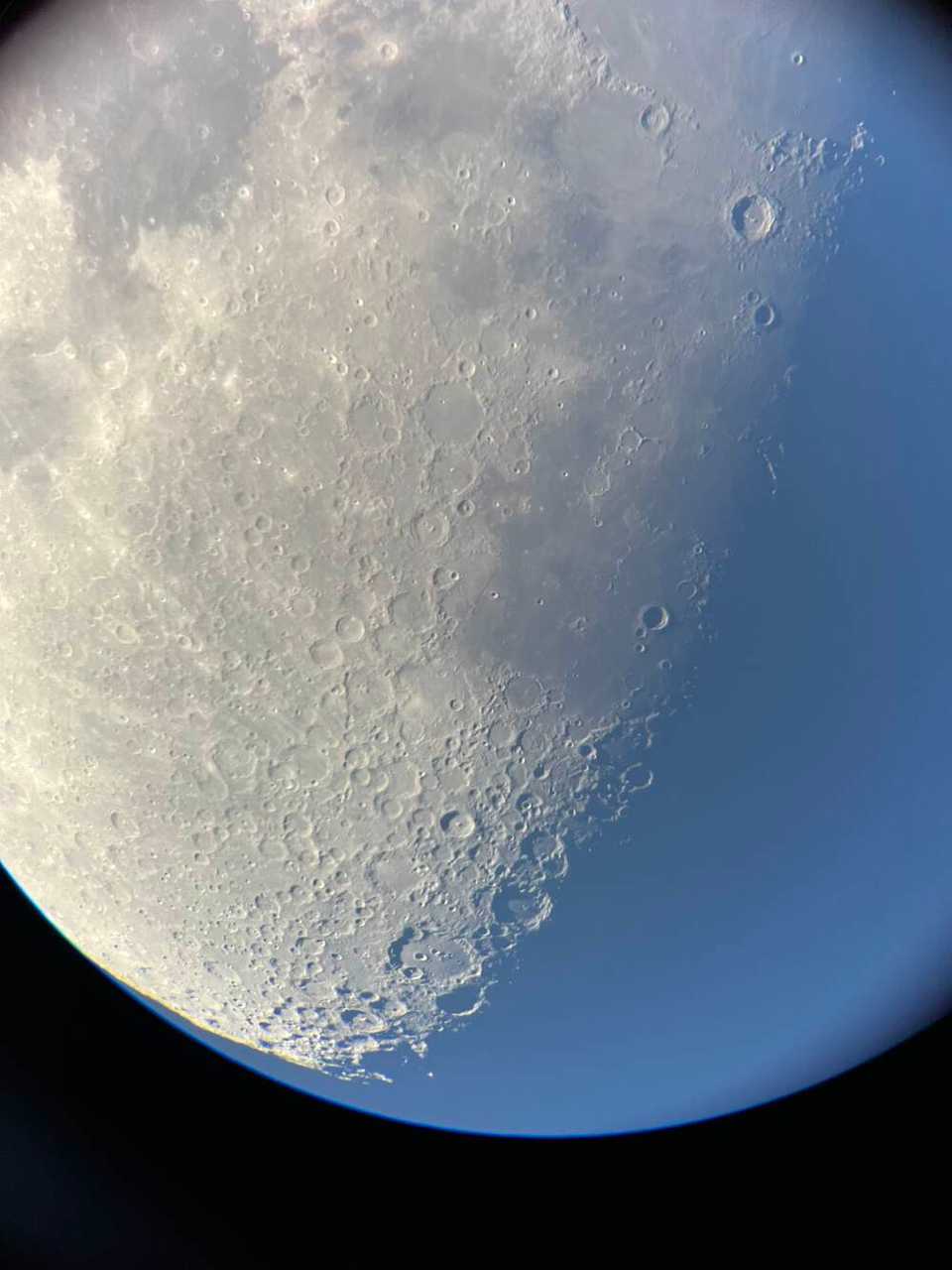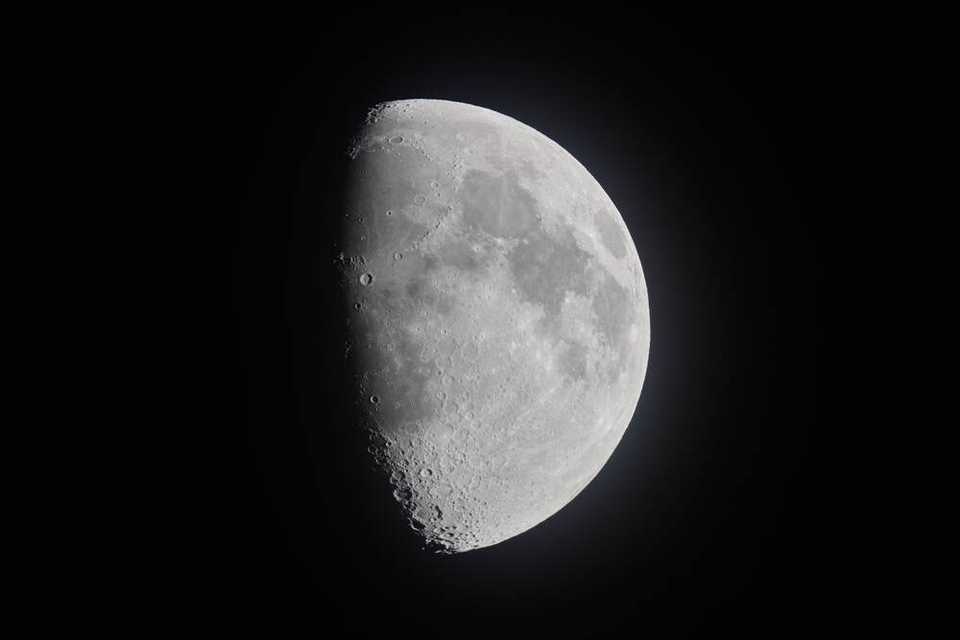Lunar Observing
I’ve recently started tinkering with my old 8” Dob that’s been with me since I was a kid, baffling it with velvet flock and cleaning the mirrors (although they ought to be re-coated). I also installed a USB-powered computer fan behind the primary mirror and powered it with a portable battery pack. When the clouds started to clear in the early evening, and the moon was visible high in the southeast sky, I couldn’t help but lug my Dob out to my small balcony at 7:30 pm to see if the modifications improved the image.
I could just see the moon from the corner of my balcony, so I set the Dob up and turned the fan to high, and started observing immediately with the 9mm Stellarvue Optimus 100-degree eyepiece. The 1200mm focal length of my Dob, coupled with the 9mm eyepiece, provides an immersive “floating in space” experience. It doesn’t have sufficient eye relief for me to observe without my glasses, but thankfully I have relatively mild astigmatism. This combo easily fits the entire disk of the moon at 133x.
The contrast was low, as it was still bright (and hot) out. The seeing was also not great but started to improve as the sun started to set and the mirror cooled down (doubtless helped by the new fan). Speaking of the fan, I installed it using elastic bands strapped to the primary mirror cell’s collimation/locking screws, and could not detect any vibrations at 133x with the fan on max. I didn’t notice any obvious improvements in image quality, although the moon looked nice and sharp.
As the seeing improved, I convinced myself to lug the massive Pelican 1650 case faithfully protecting my FC-100DZ from my basement; that case, with 8 (large) eyepieces, finder, and diagonal, weighs 25kg, so much for a grab-and-go! I am considering buying a soft case to make it lighter, but do appreciate the bullet-proof protection that the Pelican offers.

I mounted my FC-100DZ on the Stellarvue M2C with a heavy-duty carbon fiber tripod. This combo, when paired with vibration dampeners, is stable enough, but I’ve been spoiled by the utterly rock-solid platform provided by the AZ-EQ6. At 160x, the former vibrates, making focusing at high power tricky, steadying itself after three seconds; in the latter, I can barely detect movement at the eyepiece while focusing. Of course, the AZ-EQ6 is very heavy and requires power. Everything is a compromise in this hobby…
Once my FC-100DZ was set up, I used the Stellarvue Optimus 3.6mm 110-degree eyepiece, providing 222x. It was still early dusk, so the view was a little dim but sharp, and although it does feel like I’m viewing out the window of a space shuttle flying over the moon, I find it difficult to focus on any feature and sometimes find myself disoriented when viewing the moon with this eyepiece. After a while, I switched to my favourite high-power eyepiece, the excellent Pentax 5mm XW. It has plenty of eye relief for use with glasses and oozes quality.

At 160x, I sat at the eyepiece and floated around, enjoying the crimpled detail in Copernicus, and noticing how much the shadow cast by the Apennine mountain range has receded compared to the lunar outreach event two days prior. I wasn’t much of a lunar observer when I was younger, considering it to be more light pollution than something to seriously observe, but I’m becoming fascinated by how the angle of the sun hitting the features on the moon changes how we perceive them here. It’s cool to be able to notice these changes night by night.
I spent a considerable amount of time staring at Plato, trying to pick out the famously difficult craterlets hidden in the smooth, dark floor of this crater. I may have glimpsed the central craterlet in a moment of steady seeing, but the seeing wasn’t quite good enough to reliably see it.
I ended the night taking the first lunar pictures using my Fujifilm XT2 camera mounted straight onto the Tak. Despite the hazy night, the photo turned out pretty well!
